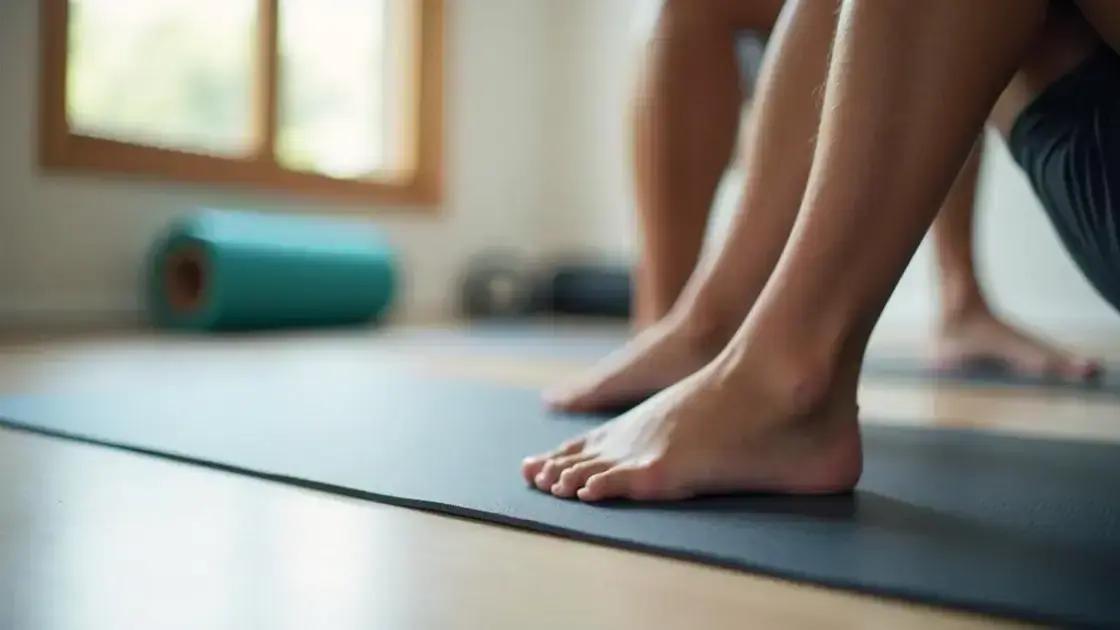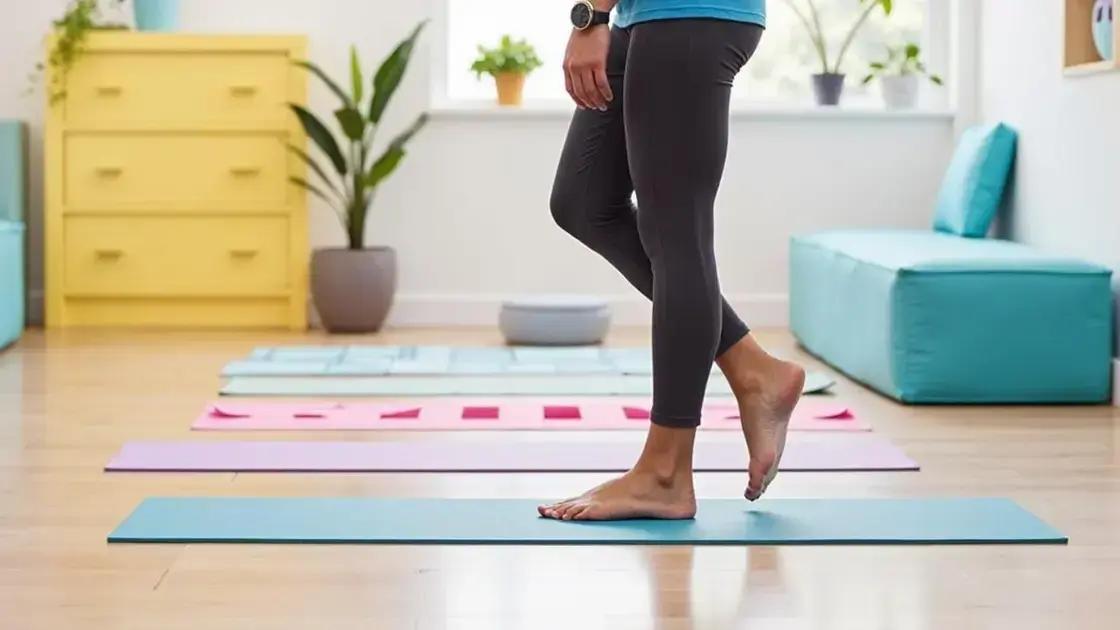To enhance ankle flexibility, incorporate exercises like ankle circles, calf stretches, and toe raises into your routine. Regular stretching, proper footwear, and active lifestyles contribute to injury prevention and balanced movement.
Enhancing ankle flexibility is essential for various sports and daily activities. When the ankles are flexible, they allow for better movement, improved balance, and a reduced risk of injuries. This article explores the importance of ankle flexibility and presents top exercises designed to help you achieve greater range of motion. Follow these dynamic exercises and tips to maintain optimal ankle flexibility and stay injury-free.
Importance of Ankle Flexibility

Flexibility in your ankles plays a critical role in overall mobility and athletic performance. Having flexible ankles not only enhances your ability to run or jump but also helps prevent injuries. When your ankle joints are limber, they can move freely through their full range of motion. This flexibility supports proper alignment and effective movement during activities like walking, running, and strength training.
Key Benefits of Ankle Flexibility
With improved ankle flexibility, you can achieve better balance and coordination. This is especially important in sports that require quick changes in direction. Flexible ankles reduce strain on the muscles and tendons surrounding the joint, allowing for smoother movements and less chance of injury.
Effects on Daily Life
Flexibility is not just vital for athletes; it is essential for everyone. Everyday tasks such as climbing stairs, playing with children, or even getting up from a chair become easier with flexible ankles. Additionally, flexibility in this area can help mitigate common issues like plantar fasciitis or ankle sprains.
Link to Overall Health
Moreover, maintaining ankle flexibility can contribute to your overall well-being by encouraging physical activity and mobility as you age. Maintaining an active lifestyle is important for long-term health, and flexible ankles make it possible to engage in a variety of activities.
Top Exercises for Ankle Flexibility

To improve ankle flexibility, there are several effective exercises you can incorporate into your routine. These exercises target the muscles and tendons surrounding the ankle, enhancing mobility and overall function. Below are some of the top exercises for ankle flexibility.
1. Ankle Circles
Start by sitting or standing comfortably. Lift one foot off the ground and move your ankle in a circular motion. Make ten circles clockwise and then ten counterclockwise. This exercise warms up the ankle joint and improves mobility.
2. Calf Stretch
Stand facing a wall, placing your hands against it. Step back with one leg, keeping it straight, while bending the front knee. Hold this position for 15-30 seconds and switch legs. This stretch targets the calf muscles and enhances ankle flexibility.
3. Toe Raises
Stand up straight and slowly lift your heels off the ground. Balance on your toes for a few seconds before lowering back down. Repeat this exercise 10-15 times. Toe raises strengthen the calves and improve overall ankle stability.
4. Seated Foot Stretch
Sit on the floor with your legs extended in front of you. Use a towel or strap around one foot, pulling it gently towards you while keeping your knee straight. Hold for 15-30 seconds and switch to the other side. This helps stretch the Achilles tendon and increase ankle flexibility.
Incorporating these exercises into your routine will greatly enhance your ankle flexibility and support better performance in various physical activities.
Tips for Maintaining Flexibility

Maintaining ankle flexibility requires consistency and awareness. Here are some practical tips to help you keep your ankles flexible and healthy.
1. Stretch Regularly
Incorporate stretching exercises for your ankles into your daily routine. Aim to stretch at least two to three times a week. Regular stretching can help maintain flexibility and prevent stiffness.
2. Warm Up Before Activities
Before engaging in physical activities, always warm up your body. Performing gentle movements like ankle circles or calf raises can prepare your joints for more intense exercise and reduce the risk of injury.
3. Use Proper Footwear
Wearing supportive and well-fitted shoes can significantly affect your ankle flexibility. Avoid overly tight shoes and opt for footwear that provides proper support during activities.
4. Stay Active
Regular physical activity is crucial for maintaining overall flexibility. Engage in activities like walking, jogging, or dancing to improve circulation in your ankles and keep the muscles engaged.
5. Listen to Your Body
Pay attention to any discomfort or tightness in your ankles. If you notice persistent pain, make sure to rest and consider consulting a healthcare professional if necessary. Treating issues early can prevent them from becoming more serious.
By following these tips, you can enhance your ankle flexibility and support better movement in all your activities.
Preventing Injuries with Flexibility

Flexibility plays a vital role in preventing injuries, especially in the ankles. Incorporating flexibility training into your routine reduces the likelihood of strains, sprains, and other injuries. Here are some key points to consider.
1. Improved Range of Motion
Flexible ankles allow for a better range of motion during physical activities. When your ankles can move freely, you are less likely to overextend or injure yourself while performing various movements.
2. Better Balance and Stability
Flexibility contributes to enhanced balance and stability. Well-stretched muscles and joints lead to better control over your movements, making it easier to maintain your footing during sports and daily tasks.
3. Reduction of Muscle Tightness
Regular ankle flexibility exercises can help reduce muscle tightness around the joint. Tight muscles can lead to compensation in movement patterns, increasing the risk of injuries over time. By keeping your ankles flexible, you minimize these risks.
4. Warm-Up and Cool Down
Always include warming up and cooling down in your workout routine. Warming up prepares your muscles and joints for action, while cooling down helps in recovery. Both practices enhance flexibility and decrease the likelihood of injuries in the ankles.
5. Consistency is Key
Being consistent with your flexibility exercises will provide the best results. Set aside time each week to focus on ankle flexibility. The more you work on it, the stronger and more stable your ankles will become.
By focusing on maintaining flexibility, you can protect your ankles from injuries and ensure they remain strong and functional for all of your activities.
Enhancing Ankle Flexibility for Optimal Health
Improving and maintaining ankle flexibility is essential for overall mobility and injury prevention. By incorporating regular stretching and strengthening exercises into your routine, you can enhance your performance in various activities.
Understanding the importance of ankle flexibility, as well as the right techniques to prevent injuries, will help you achieve better balance and stability in your movements. Remember the tips we’ve discussed to keep your ankles healthy and flexible for years to come.
Flexibility is a key factor in staying active and enjoying a healthy lifestyle, so make it a priority in your fitness regimen!
FAQ – Frequently Asked Questions about Ankle Flexibility
Why is ankle flexibility important?
Ankle flexibility is essential for better balance, coordination, and mobility. It helps prevent injuries and improves performance in sports and daily activities.
What are some effective exercises for ankle flexibility?
Effective exercises include ankle circles, calf stretches, toe raises, and seated foot stretches. Incorporating these into your routine can enhance flexibility.
How often should I stretch my ankles?
Aim to stretch your ankles at least two to three times a week to maintain and improve flexibility.
Can I prevent injuries by improving ankle flexibility?
Yes, improving ankle flexibility helps reduce the risk of injuries by enhancing range of motion, balance, and stability.
What tips can help maintain ankle flexibility?
Stretch regularly, warm up before activities, wear supportive shoes, stay active, and listen to your body to maintain ankle flexibility effectively.
What should I do if I feel pain in my ankles?
If you experience persistent pain, consider resting and consulting a healthcare professional for assessment and guidance.












